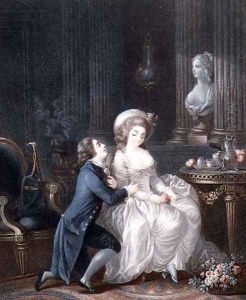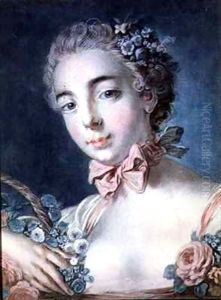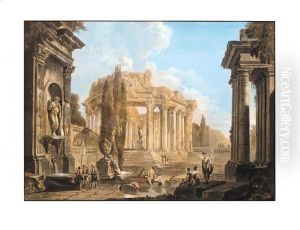Louis Marin Bonnet Paintings
Louis Marin Bonnet was a distinguished French printmaker, especially known for his exquisite pastel manner and color printmaking techniques during the Rococo period. Born in 1736, his contributions to the art world spanned a significant portion of the 18th century, a time characterized by its ornate and decorative artistic expressions. Bonnet's work was highly regarded for its innovative approach to printmaking, particularly in the realm of color prints, which was a relatively new domain in his era.
Bonnet began his artistic journey under the tutelage of Jean-Charles François, where he mastered the crayon manner (manière de crayon), a technique designed to imitate the delicate nuances of chalk and pastel drawings in print form. This foundation paved the way for his later explorations into the color printmaking that would define his career. By the 1760s, Bonnet had perfected the pastel manner, producing prints that rivaled the softness and depth of actual pastel drawings. His ability to replicate the subtle gradations of light and shade, as well as his sophisticated use of color, set him apart from his contemporaries.
Bonnet's technique involved superimposing several plates, each inked with a different color, to achieve a rich, painterly effect. This labor-intensive process required remarkable precision and skill, as the alignment of the plates was crucial to the success of the final print. Among his most celebrated works are his reproductions of François Boucher's paintings, which showcase Bonnet's mastery of the pastel manner and his ability to capture the essence of Boucher's original works.
Despite the technical brilliance of his prints, Bonnet's career was not without challenges. The intricate nature of his process meant that his prints were expensive to produce and, therefore, accessible only to a wealthy clientele. Moreover, the French Revolution and the subsequent changes in artistic tastes and patronage had a profound impact on his career. Bonnet passed away in 1793, leaving behind a legacy that had a lasting impact on the development of printmaking in Europe. His works are now held in high esteem by collectors and museums around the world, celebrated for their technical innovation and aesthetic beauty.


